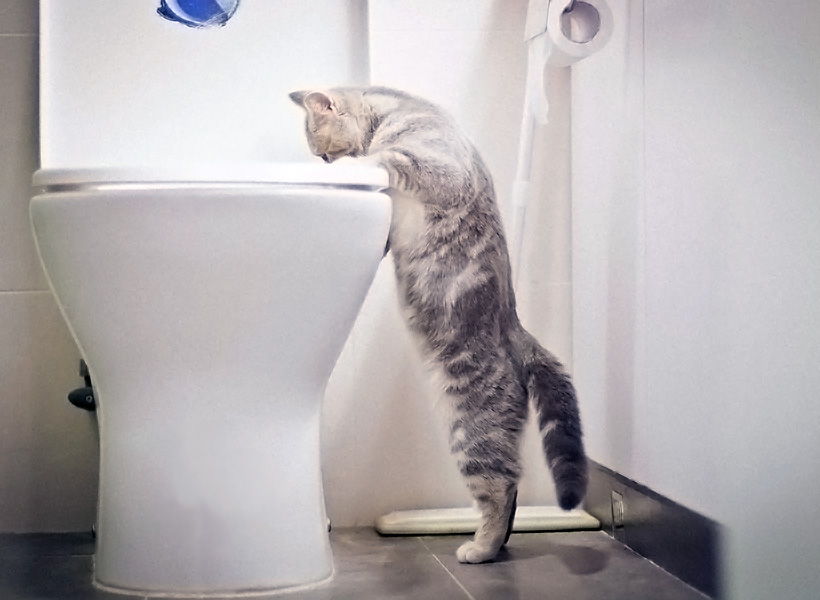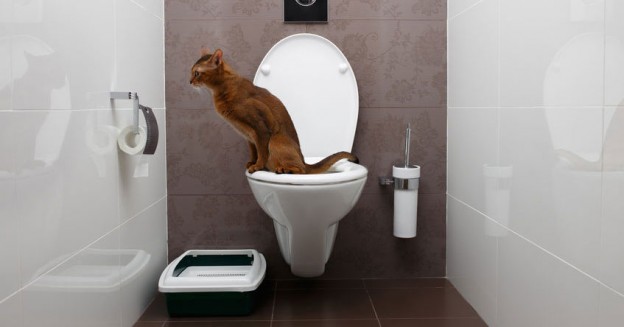How do you actually feel when it comes to Can You Flush Cat Poo or Litter Down the Toilet??

Intro
As feline owners, it's vital to be mindful of just how we throw away our feline buddies' waste. While it might seem practical to purge feline poop down the commode, this practice can have destructive repercussions for both the setting and human health.
Environmental Impact
Purging pet cat poop introduces damaging virus and bloodsuckers right into the water supply, presenting a considerable threat to aquatic ecological communities. These pollutants can negatively influence aquatic life and compromise water top quality.
Wellness Risks
Along with environmental problems, flushing pet cat waste can also posture health dangers to people. Pet cat feces might consist of Toxoplasma gondii, a parasite that can create toxoplasmosis-- a possibly severe illness, specifically for expecting females and individuals with damaged immune systems.
Alternatives to Flushing
Fortunately, there are more secure and much more liable ways to deal with feline poop. Consider the complying with choices:
1. Scoop and Dispose in Trash
The most typical approach of getting rid of pet cat poop is to scoop it right into a biodegradable bag and throw it in the trash. Make sure to make use of a committed clutter inside story and deal with the waste quickly.
2. Use Biodegradable Litter
Choose naturally degradable feline litter made from materials such as corn or wheat. These clutters are eco-friendly and can be securely taken care of in the garbage.
3. Bury in the Yard
If you have a yard, take into consideration hiding cat waste in a marked location away from veggie gardens and water resources. Make sure to dig deep enough to stop contamination of groundwater.
4. Install a Pet Waste Disposal System
Buy a family pet garbage disposal system particularly designed for feline waste. These systems make use of enzymes to break down the waste, decreasing smell and environmental effect.
Conclusion
Responsible pet dog ownership expands past supplying food and shelter-- it also entails correct waste management. By refraining from purging feline poop down the toilet and choosing alternative disposal techniques, we can reduce our environmental impact and shield human wellness.
Why Can’t I Flush Cat Poop?
It Spreads a Parasite
Cats are frequently infected with a parasite called toxoplasma gondii. The parasite causes an infection called toxoplasmosis. It is usually harmless to cats. The parasite only uses cat poop as a host for its eggs. Otherwise, the cat’s immune system usually keeps the infection at low enough levels to maintain its own health. But it does not stop the develop of eggs. These eggs are tiny and surprisingly tough. They may survive for a year before they begin to grow. But that’s the problem.
Our wastewater system is not designed to deal with toxoplasmosis eggs. Instead, most eggs will flush from your toilet into sewers and wastewater management plants. After the sewage is treated for many other harmful things in it, it is typically released into local rivers, lakes, or oceans. Here, the toxoplasmosis eggs can find new hosts, including starfish, crabs, otters, and many other wildlife. For many, this is a significant risk to their health. Toxoplasmosis can also end up infecting water sources that are important for agriculture, which means our deer, pigs, and sheep can get infected too.
Is There Risk to Humans?
There can be a risk to human life from flushing cat poop down the toilet. If you do so, the parasites from your cat’s poop can end up in shellfish, game animals, or livestock. If this meat is then served raw or undercooked, the people who eat it can get sick.
In fact, according to the CDC, 40 million people in the United States are infected with toxoplasma gondii. They get it from exposure to infected seafood, or from some kind of cat poop contamination, like drinking from a stream that is contaminated or touching anything that has come into contact with cat poop. That includes just cleaning a cat litter box.
Most people who get infected with these parasites will not develop any symptoms. However, for pregnant women or for those with compromised immune systems, the parasite can cause severe health problems.
How to Handle Cat Poop
The best way to handle cat poop is actually to clean the box more often. The eggs that the parasite sheds will not become active until one to five days after the cat poops. That means that if you clean daily, you’re much less likely to come into direct contact with infectious eggs.
That said, always dispose of cat poop in the garbage and not down the toilet. Wash your hands before and after you clean the litter box, and bring the bag of poop right outside to your garbage bins.
https://trenchlesssolutionsusa.com/why-cant-i-flush-cat-poop/

I came across that blog entry about Can You Flush Cat Poop Down The Toilet? when doing research the web. Liked our entry? Please share it. Let another person discover it. I treasure reading our article about How to Dispose of Cat Poop and Litter Without Plastic Bags.
Click Here!
Comments on “Reasons You Shouldn't Flush Cat Poop Down Your Toilet - Preserve Your Plumbing System”